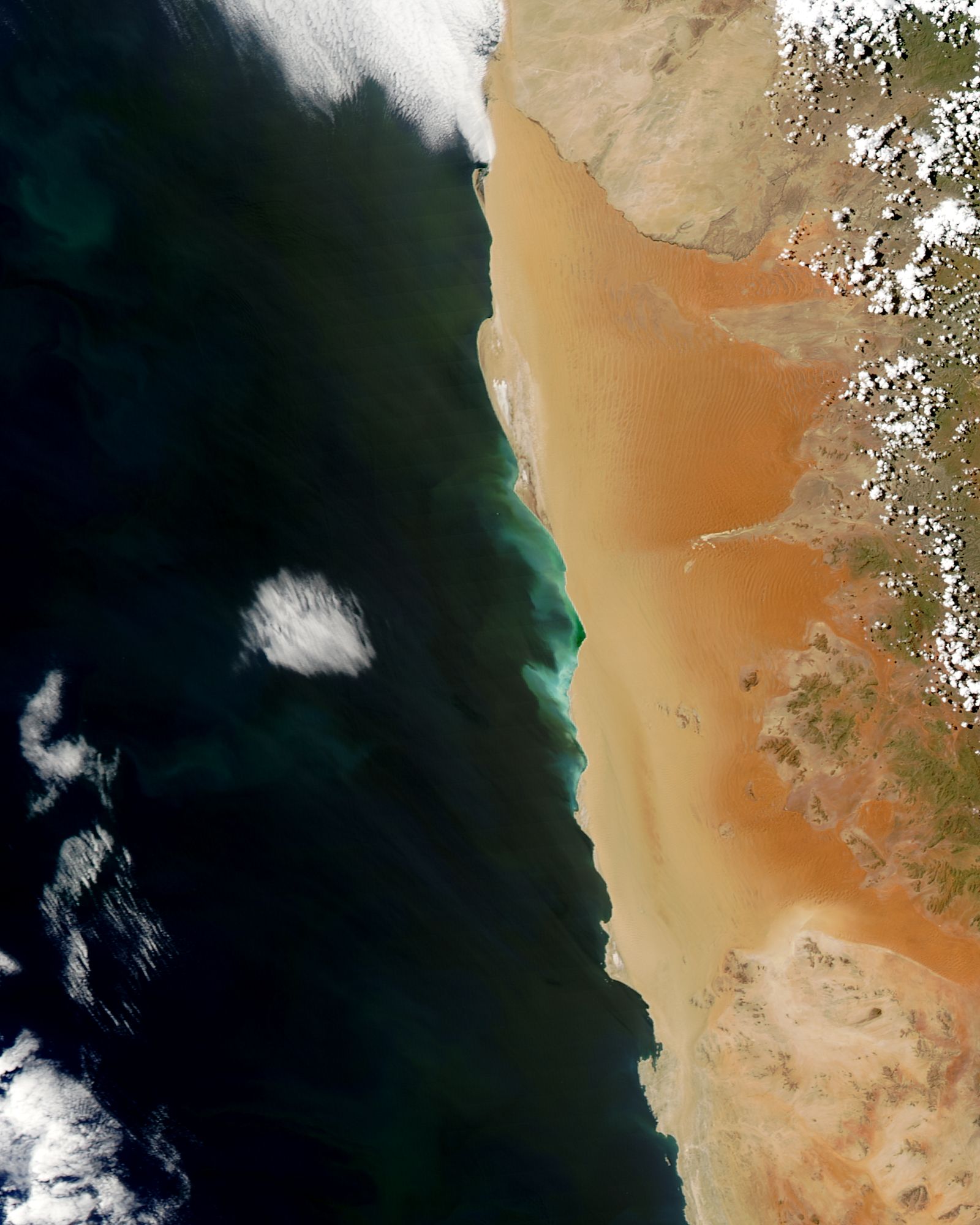 Michael Hayes Dec 2, 2015 06:52 | Proposal contributor Please watch this brief message from B. Gates as it helps address the judge's potential concern over initial risk of supporting an aggressive development of needed technology and thus addresses many of the transformative concepts being collected within the Colab. |
 Michael Hayes Dec 4, 2015 06:07 | Proposal contributor I would like to draw the attention of reader to the below 'Global Plan' which is currently in the last days of voting. Although my past work is used in this proposal and I have joined the team (and given my vote to the effort) many others have contributed. The following text was posted today within the Global Plan in support of the proposal and I ask all readers to spend a few minutes in reviewing the options and place your vote before the deadline.
The Global Plan: Make Climate a Top Priority for Action by Every Global Citizen and Organization is, without exception, the most well thought out, actionable and inclusive of any proposal ever submitted within the CoLab experiment and should be selected/supported by those that truly understand that we need such broad based efforts if we are to realistically challenge the power base which has brought us to this global scale point of collective suicide. All of the other 4 Global Plan proposals, currently in the voting stage, are supported, either directly or indirectly, within this proposal (including my own) and thus voting for this highly inclusive plan would be supporting the entire spectrum of proposals. In brief, we fundamentally need to rally around a comprehensive and inclusive central plan, such as this proposal offers, so that the effort(s) and funding can be focused with the most strength and done so in the shortest possible time: for time is not our ally in this life or death struggle. To reject this proposal would be to be to reject the existential need to substantially confront the power base which threatens our very existence. In the simplest words: which side of the struggle do you wish to support? Michael |
 Doug Wood Jan 19, 2016 07:49 | On Bill Gates Breakthrough Energy Coalition ... Thorium? http://www.theecologist.org/News/news_analysis/2986571/is_gatess_breakthrough_energy_coalition_a_nuclear_spearhead.html https://challenges.openideo.com/challenge/climate-stories/stories/mission-innovation |
 Michael Hayes Jan 19, 2016 09:01 | Proposal contributor Hello Doug, Yes, there is interest in a new type of nuclear reactor and I'm sure Mr. Gates would like to see collaboration on that venture. However, the Gates Foundation, and many other high-end foundations, are looking for less contentious energy (and water/nutrient) ideas for use in the developing nations. Defining a suite of renewable energy, water and nutrient management near term development needs is on many radar screens and the new coalition is, I am sure, well aware of how important it is to leverage their resources with other investor's funding (interests). The Breakthrough Energy Coalition should be given the opportunity to get organized and fully functional before folks start jumping to conclusions as to the scope of the work they will wish to support. Thanks for the comment and your support, Michael |
 Doug Wood Jan 20, 2016 12:01 | Micheal -- |
 Doug Wood Jan 20, 2016 12:16 | Micheal -- |
 Michael Hayes Jan 20, 2016 03:02 | Proposal contributor Hi Doug, I agree with the 'time and cost' downside to Terrapower's approach and that we need a wide spectrum of sustainable energy (and water-nutrient) management options. With that said, the 'once through fuel cycle' is probably the best design for fission reactors. I believe Terrapower's design may actually be an upgraded version of an old small scale military reactor used back in the late 60s and early 70s. In brief, fissionable material can get hot enough, at the minimal critical levels, to boil a good deal of water (no need for movable fuel rods). These old 'solid state' reactors were not much more than a buried small shipping container sized load of minimal critical fuel loads which were spaced just close enough to boil water. The only moving parts were the water valves. Even if the water valves was shut off, the fuel load was never in danger of going super critical as the fuel loads were fixed at a minimal critical distance from each other. Once the buried reactors were no longer needed, they were simply left buried. You may not find much about these old military designs on Wiki (go figure), yet NASA has used, and still is using, this type of 'solid state once through fuel cycle' technology (read 'The Martian' for more details). What I read in your links that did worry me is the floating reactors which China is moving forward on. Floating reactors are not a new twist as Russia explored the concept a few decades ago as a way to power their Siberian coastal communities. The problem with the design concept is that it will add a great deal of heat to an already heat stressed marine environment. There is far more marine surface area going out of primary production (photosynthesis) than we are losing due to terrestrial desertfication and forest clear cutting combined. Per NOAA: "The expansion of oligotrophic (lifeless) surface waters in the subtropical gyres appears to be directly linked to increasing temperatures. Warming of the gyres, whether induced by natural processes or human activities, strengthens vertical stratification of these open-ocean regions, reducing the likelihood that nutrient-rich deep waters will be transported into the surface layer where photosynthetic activity occurs. The expected result is lower rates of primary production in these waters, with cascading effects through higher levels of the food chain. Ocean models and other observations show warming and increased vertical stratification is occurring in all oceans, thus continued expansion of oligotrophic regions within the gyres is predicted." In brief, the oceans are already absorbing up to 80% of the excess heat from AGW, which reduces primary production-CO2 utilization, and that increase in ocean temperature well not naturally dissipate for millennia. Reversing the warming of the oceans is actually our largest scale and most long term challenge in mitigating AGW. Floating reactor designs completely ignore this reality. Dr. Susan Solomon illustrates and describes this issue of long term ocean warming in her presentation during " The Great Debate: CLIMATE CHANGE - Surviving The Future (OFFICIAL) - (Part 1/2) I highly encourage everyone to watch the full 2 part debate and pay close attention to Dr. Solomon's input throughout the debate (she's clearly the adult in the room). Her opening statement in the second part of the debate sums up what most rational and reasonable folks wish to see as our global AGW mitigation technology strategy. If I were to slap a AGW mitigation bumper sticker on my car, the above wisdom would be it! Michael |
 Michael Hayes Jan 20, 2016 03:57 | Proposal contributor Sorry about the format screw up. For some reason pasting directly to the comment section deletes the paragraph spacing. Going through the on site pasting operation does seem to solve this glitch. Again:)) Hi Doug, I agree with the 'time and cost' downside to Terrapower's approach and that we need a wide spectrum of sustainable energy (and water-nutrient) management options. With that said, the 'once through fuel cycle' is probably the best design for fission reactors. I believe Terrapower's design may actually be an upgraded version of an old small scale military reactor used back in the late 60s and early 70s. In brief, fissionable material can get hot enough, at the minimal critical levels, to boil a good deal of water (no need for movable fuel rods). These old 'solid state' reactors were not much more than a buried small shipping container sized load of minimal critical fuel loads which were spaced just close enough to boil water. The only moving parts were the water valves. Even if the water valves was shut off, the fuel load was never in danger of going super critical as the fuel loads were fixed at a minimal critical distance from each other. Once the buried reactors were no longer needed, they were simply left buried. You may not find much about these old military designs on Wiki (go figure), yet NASA has used, and still is using, this type of 'solid state once through fuel cycle' technology (read 'The Martian' for more details). What I read in your links that did worry me is the floating reactors which China is moving forward on. Floating reactors are not a new twist as Russia explored the concept a few decades ago as a way to power their Siberian coastal communities. The problem with the design concept is that it will add a great deal of heat to an already heat stressed marine environment. There is far more marine surface area going out of primary production (photosynthesis) than we are losing due to terrestrial desertfication and forest clear cutting combined. Per NOAA: "The expansion of oligotrophic (lifeless) surface waters in the subtropical gyres appears to be directly linked to increasing temperatures. Warming of the gyres, whether induced by natural processes or human activities, strengthens vertical stratification of these open-ocean regions, reducing the likelihood that nutrient-rich deep waters will be transported into the surface layer where photosynthetic activity occurs. The expected result is lower rates of primary production in these waters, with cascading effects through higher levels of the food chain. Ocean models and other observations show warming and increased vertical stratification is occurring in all oceans, thus continued expansion of oligotrophic regions within the gyres is predicted." In brief, the oceans are already absorbing up to 80% of the excess heat from AGW, which reduces primary production-CO2 utilization, and that increase in ocean temperature well not naturally dissipate for millennia. Reversing the warming of the oceans is actually our largest scale and most long term challenge in mitigating AGW. Floating reactor designs completely ignore this reality. Dr. Susan Solomon illustrates and describes this issue of long term ocean warming in her presentation during " The Great Debate: CLIMATE CHANGE - Surviving The Future (OFFICIAL) - (Part 1/2) I highly encourage everyone to watch the full 2 part debate and pay close attention to Dr. Solomon's input throughout the debate (she's clearly the adult in the room). Her opening statement in the second part of the debate sums up what most rational and reasonable folks wish to see as our global AGW mitigation technology strategy. If I were to slap a AGW mitigation bumper sticker on my car, the above wisdom would be it! Michael |
 Michael Hayes Jan 20, 2016 03:06 | Proposal contributor Well, I seem to be wrong about that. |
 Doug Wood Jan 20, 2016 06:51 | We share historical perspective. Waiting for a 1000 flowers to bloom means some will die unexamined. The heat of oxidizing carbon is multiplied 100,000 times by emitted atmospheric CO2. I doubt floating reactors have that footprint. Roger that on stagnate theromclines and nutrients. I read "Under a Green Sky" by Peter Ward PhD Paleontologist, |
 Michael Hayes Jan 20, 2016 07:42 | Proposal contributor I actually meant that I was wrong about the formatting glitch being solved, not that her statement is wrong:))) Just off the press: Further evidence that using the oceans as a vast scale heat sink for floating fission reactors is not in our collective best interest: World's oceans warming at increasingly faster rate, new study finds Oceans Trapped Startling Amount of Heat in Last 18 Years Further related reading: Marine food chains at risk of collapse, extensive study of world's oceans finds
Oceans face massive and irreversible impacts without carbon cuts – study How Long Can Oceans Continue To Absorb Earth’s Excess Heat? Ocean Scientist for Informed Policy In brief, we need to find ways to carry out vast scale cooling of the oceans, not dump massive amounts of heat into them. Massive cooling of surface water is plausible with extant technology. One example of a conceptual design level effort is below:
Other closely related emerging large scale oceanic designs can be found at: Ocean Resources Conservation and Adaptation (ORCA) Cities Shimizu's "GreenFloat" This design is not currently calling for cooling massive volumes of surface water yet it can be easily designed to do so. http://www.troposplatform.eu/tropos-european-collaborative-project/Presentation-of-The-TROPOS-Project: Again, vast scale ocean surface cooling can be easily incorporated in the above work. The Salter Sink: This concept is specifically designed for ocean cooling and has a mariculture aspect, however, as can be seen, the heat is being pumped downward and thus contributes to the deep warming of the water column not unlike what a floating nuke would do. Also, the typical Ocean Thermal Energy Conversion design has this same fault of pumping warm water down into the water column. Most diagrams of OTEC gloss over this fact as we can see in the above image with both in-take and out-flow being the same color. By all rights, the out flow should be showing a much warmer flow. So, I believe there is a strong case to be made that floating nukes are not wise yet there is both a vast need for cooling the oceans and that there are a number of reasonable concepts which can be developed and deployed in the near term future. Michael |
 Michael Hayes Jan 20, 2016 07:04 | Proposal contributor Yes, a stratified ocean is known as a Canfield ocean and there have been rather recent localized medium scale yet related events of hydrogen sulfide released in such vast quantities that the local fish stock was killed off in mass which drove the population in-land in search of bush meat, to replace the fish,which in turn, triggered the militarization of boarders and a sharp increase in weapons in the area. In short, this one episode of short term and localized thermal stagnation of the local waters reverberated from the Namibian coast, the site of the out gassing, all the way to Somalia, where many of the weapons ended up being collected. Didn't do much for the 'bush meat' population either. Now, imagine that scenario being played out throughout the tropical Asia, South and Central Amer. as well as up and down the African coast lines. This is not some sort of Sci-Fi giggle, it has happened on a global scale more than once, as you rightfully pointed out. Michael
|
 Doug Wood Jan 21, 2016 02:30 | WA oyster industry is $100,000,000/year, employs 3,000, and is being destroyed from ocean carbon acid. |





